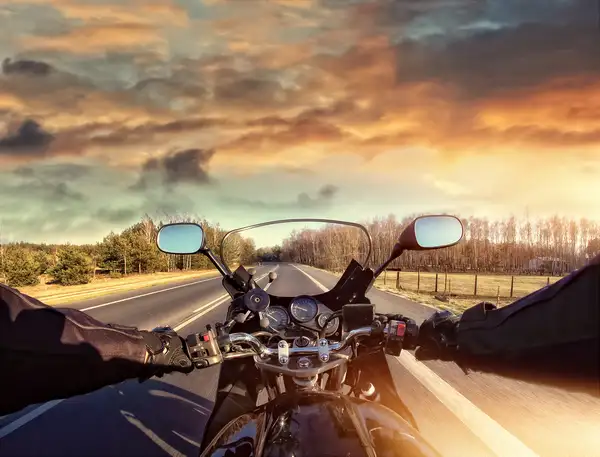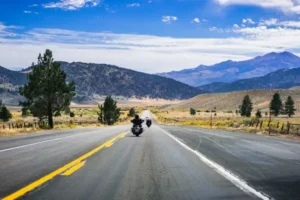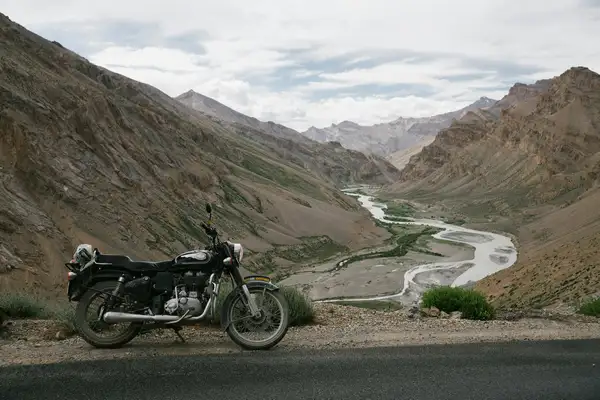
Embarking on a motorcycle road trip offers an exhilarating sense of freedom and adventure. The open road, scenic views, and the thrill of riding make long-distance motorcycle travel an unforgettable experience. However, planning and preparation are key to ensuring a smooth and safe journey. Before you hit the road, it’s important to take several crucial steps to prepare yourself, your gear, and your motorcycle. In this article, we’ll cover everything you need to know for proper road trip preparation, from bike maintenance to packing essentials and safety considerations.
1. Motorcycle Maintenance: Ensuring Your Bike is Road-Ready
Your motorcycle’s performance and reliability are essential to a successful road trip. Before setting off, thoroughly inspect and maintain your bike to avoid mechanical issues during your ride.
Check the Tires
Tires are one of the most critical components of your motorcycle, and they can wear down faster during long trips. Ensuring that your tires are in optimal condition can prevent flats, improve fuel efficiency, and enhance your bike’s overall performance.
Tip: Inspect the tire tread depth and look for any signs of uneven wear, cracks, or punctures. If the tread is too worn, replace the tires before your trip. Additionally, ensure that your tire pressure is at the manufacturer’s recommended levels, as underinflated or overinflated tires can affect handling and safety.
Oil and Fluid Levels
Proper lubrication is essential for your motorcycle’s engine and other mechanical parts. Before a long trip, check the oil level, and if your bike is nearing its next oil change, do it before your trip. You should also check other fluid levels, such as coolant, brake fluid, and clutch fluid, to ensure everything is topped off.
Tip: Pack a small container of motor oil, brake fluid, and coolant for emergencies. On long trips, especially in changing weather, these fluids are essential for the smooth functioning of your bike.
Chain and Belt Inspection
Your motorcycle’s chain or belt is responsible for transferring power from the engine to the rear wheel. Over time, it can become loose, worn, or dirty, leading to reduced efficiency and even breakdowns.
Tip: Clean and lubricate the chain regularly, and check for any signs of wear. Adjust the tension if necessary. If your bike uses a belt drive, inspect it for cracks or fraying, and ensure it’s properly tensioned.
Brake System
Strong, reliable brakes are crucial for safety, especially on a long road trip. Inspect your brake pads, rotors, and fluid levels to make sure your bike can stop effectively when needed.
Tip: If your brake pads are worn down, replace them before the trip. Also, bleed the brake lines and replace old brake fluid to ensure responsiveness.
Electrical System and Battery
A faulty electrical system can lead to problems with your lights, ignition, and other critical components. Make sure your bike’s battery is fully charged and that all lights (headlights, taillights, and turn signals) are functioning properly.
Tip: Bring a portable charger or jump starter in case of battery issues. Consider upgrading to an AGM (Absorbed Glass Mat) or lithium-ion battery for better performance on long trips.
2. Essential Gear and Packing for a Motorcycle Road Trip
What you bring on a motorcycle road trip can make or break your journey. Unlike traveling by car, motorcycles have limited storage, so packing smart is crucial. Focus on essential gear, personal items, and tools that will enhance comfort, safety, and convenience.
Safety Gear
Safety should always be your top priority on any ride. Make sure you have high-quality, protective gear that will keep you safe and comfortable in varying weather conditions.
Essential Gear Includes:
- Helmet: A full-face helmet provides the best protection from the elements and accidents.
- Jacket and Pants: Choose gear with protective armor and ventilation for temperature control.
- Gloves: Riding gloves protect your hands from the wind, cold, and potential injury.
- Boots: Invest in sturdy, waterproof riding boots that offer ankle support and protection.
Tip: Pack an extra pair of gloves and a neck gaiter for cold or windy conditions.
Weather-Appropriate Clothing
Weather conditions can change drastically on long road trips, so it’s important to pack clothing that will keep you comfortable, whether it’s sunny, cold, or rainy.
Tip: Bring layers, including thermal base layers for warmth, a windproof and waterproof jacket, and lightweight clothing for warmer days. Pack rain gear to protect yourself and your belongings from unexpected downpours.
Tool Kit and Spare Parts
Breakdowns can happen, even with a well-maintained bike. Having a basic tool kit and spare parts on hand can help you make minor repairs and keep you moving.
Must-Have Tools and Parts:
- Multitool or wrenches
- Tire repair kit (with plugs and CO2 cartridges or a portable air pump)
- Spare fuses and bulbs
- Chain lube
- Zip ties and duct tape for emergency fixes
Tip: If you’re not mechanically inclined, familiarize yourself with basic repairs like fixing a flat or adjusting a chain.
Navigation and Communication
Staying on the right path is crucial for a smooth road trip. While smartphones with GPS are convenient, it’s important to have backup navigation and communication tools in case of poor signal or low battery.
Tip: Download offline maps or invest in a GPS system designed for motorcycles. Bring a charger with a motorcycle-friendly USB port or a power bank to keep your devices powered.
Luggage and Storage Solutions
Motorcycles have limited storage space, so it’s essential to invest in good luggage systems that can carry your gear securely without affecting your bike’s balance.
Luggage Options:
- Saddlebags: Soft or hard saddlebags attach to the sides of your bike and offer ample storage.
- Tank Bags: Tank bags sit on top of the fuel tank and provide easy access to essential items like maps, snacks, and electronics.
- Tail Bags: Tail bags can be strapped to the rear seat or luggage rack, offering additional storage.
Tip: Use waterproof luggage or pack your items in waterproof liners to protect against rain.
3. Planning the Route and Stops
A well-planned route can make your road trip more enjoyable and less stressful. Researching your route in advance helps you anticipate road conditions, fuel stops, rest areas, and scenic viewpoints.
Research the Route
Take time to plan your route, especially if you’re unfamiliar with the roads. Consider the type of terrain, elevation changes, and weather conditions that may impact your ride. For scenic rides, plan routes through national parks or along coastlines.
Tip: If you’re planning a multi-day trip, break up your route into manageable distances. Riding for 8-10 hours straight can lead to fatigue, so plan regular breaks to stretch and refuel.
Fuel Stops
Motorcycles have smaller fuel tanks than cars, which means you’ll need to plan fuel stops more frequently, especially in remote areas.
Tip: Research fuel stations along your route and factor in your bike’s fuel range. Consider carrying a small fuel canister for emergencies.
Lodging and Camping
Whether you prefer staying in hotels or camping, make reservations in advance, especially if you’re traveling during peak seasons.
Tip: If you’re camping, ensure you have all the necessary gear, including a tent, sleeping bag, and cooking equipment. Look for motorcycle-friendly campgrounds or hotels with secure parking.
4. Staying Safe on the Road
Long-distance riding comes with additional risks, and it’s important to prioritize safety during your road trip. From staying alert to handling emergencies, being prepared can make all the difference.
Stay Hydrated and Energized
Riding for long hours can be physically demanding, especially in hot weather. Dehydration and fatigue can impair your judgment and reaction times.
Tip: Carry a hydration pack or water bottles and drink regularly. Pack energy snacks like nuts, protein bars, or fruit to keep your energy levels up.
Ride Within Your Limits
Long-distance rides can be tiring, both mentally and physically. Pushing yourself too hard can lead to fatigue, which increases the risk of accidents.
Tip: Set realistic daily mileage goals and take breaks whenever you feel tired. If you’re traveling with others, communicate your needs and don’t hesitate to call it a day earlier than planned.
Emergency Preparedness
Accidents and breakdowns can happen, no matter how well-prepared you are. Having an emergency plan in place ensures you’re ready to handle the unexpected.
Tip: Pack a first aid kit, know the basics of motorcycle accident safety, and have a list of emergency contacts handy. Let someone know your route and expected arrival times.
A motorcycle road trip is an exciting and rewarding adventure, but preparation is key to ensuring a smooth and enjoyable journey. From maintaining your bike to packing essential gear and planning your route, every step you take before you ride will contribute to a safer and more comfortable experience. By being well-prepared, you can focus on enjoying the open road, breathtaking scenery, and the thrill of motorcycling at its finest.




